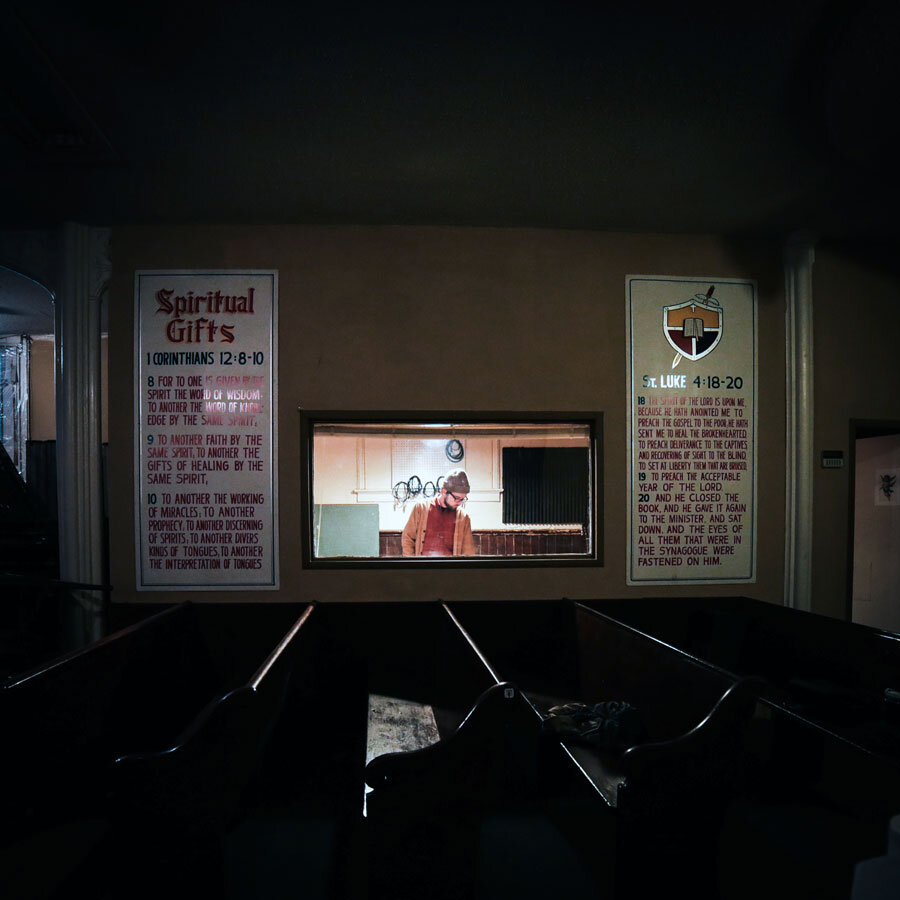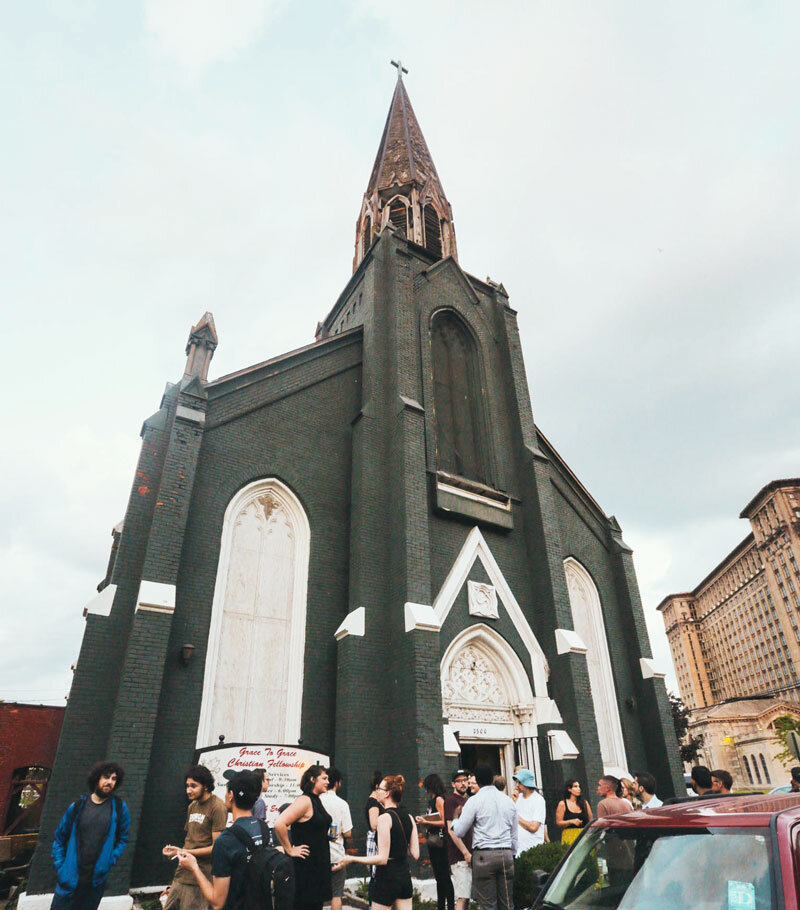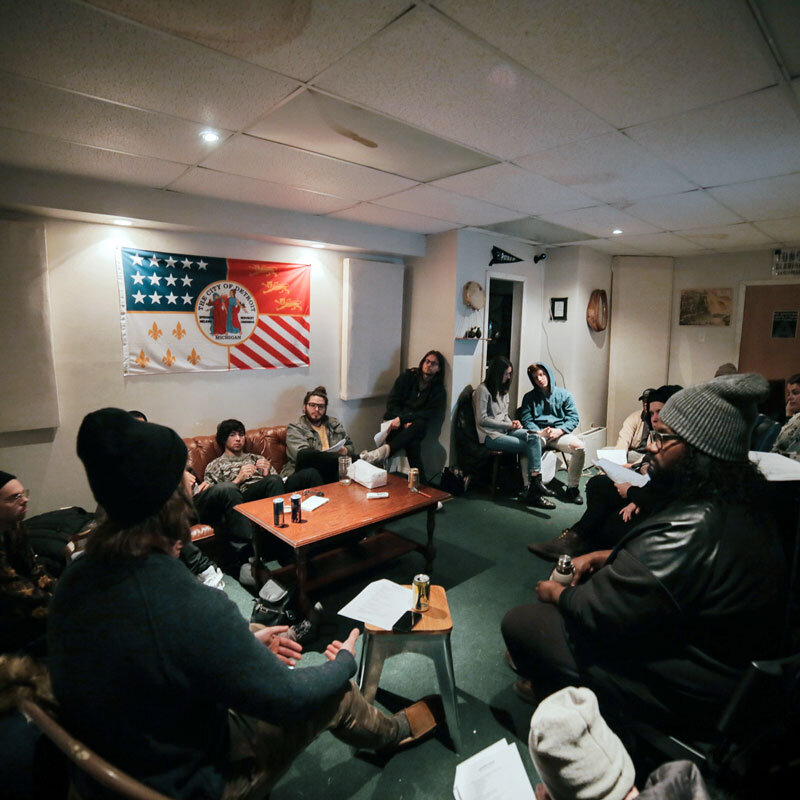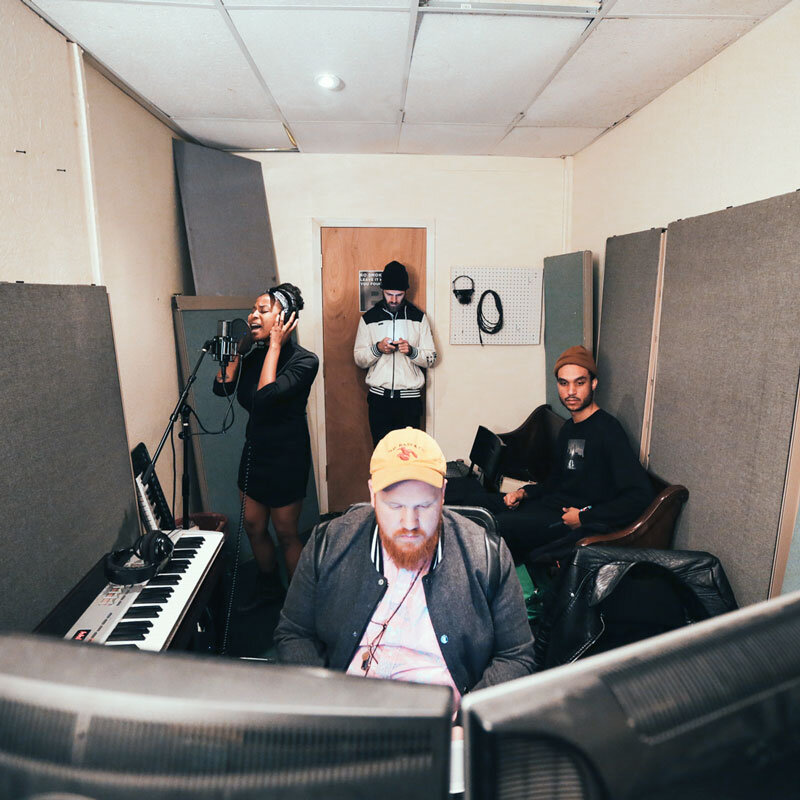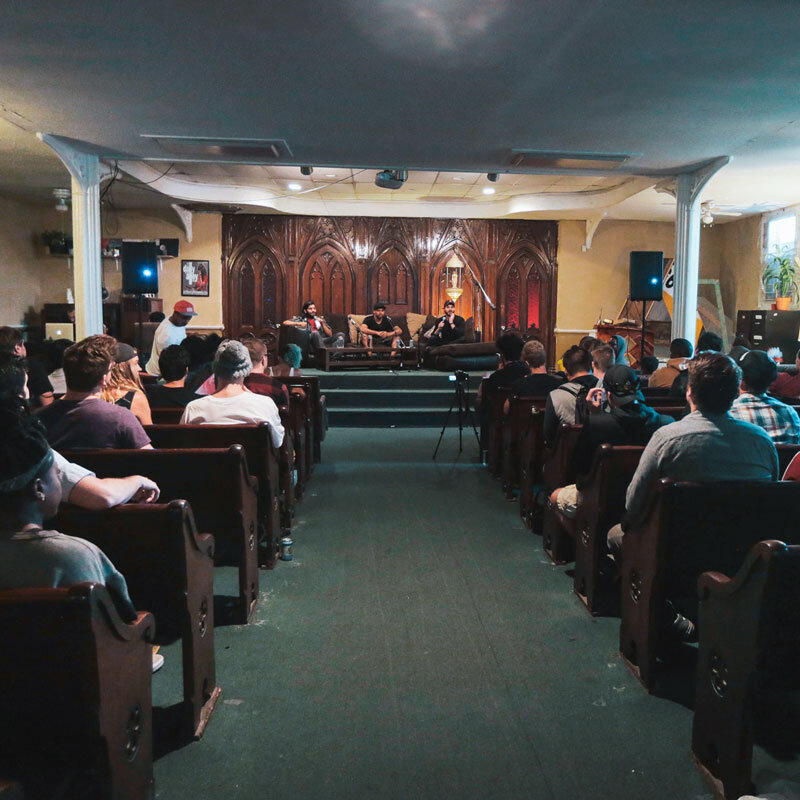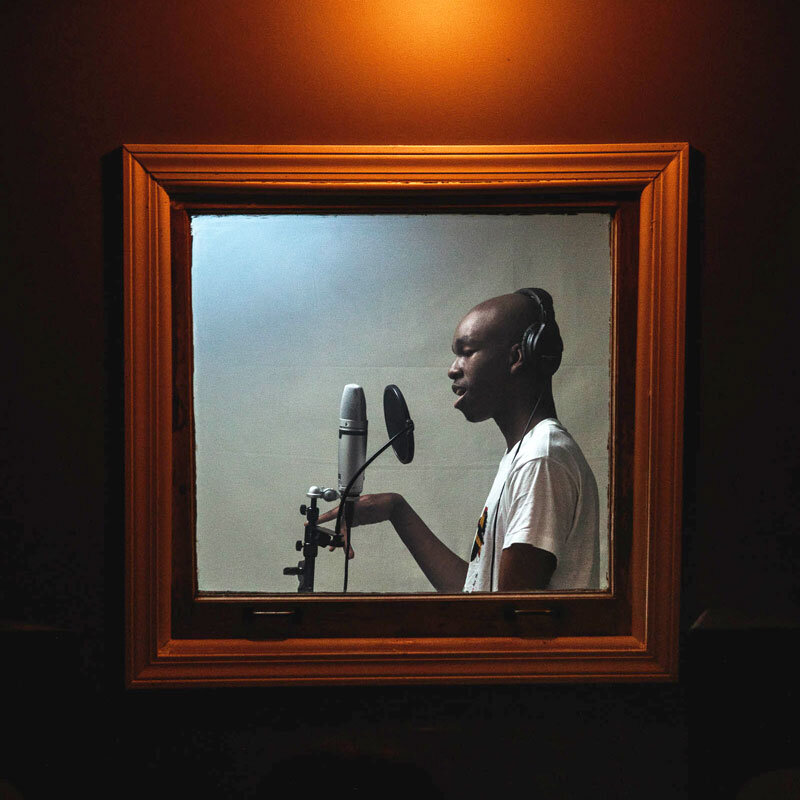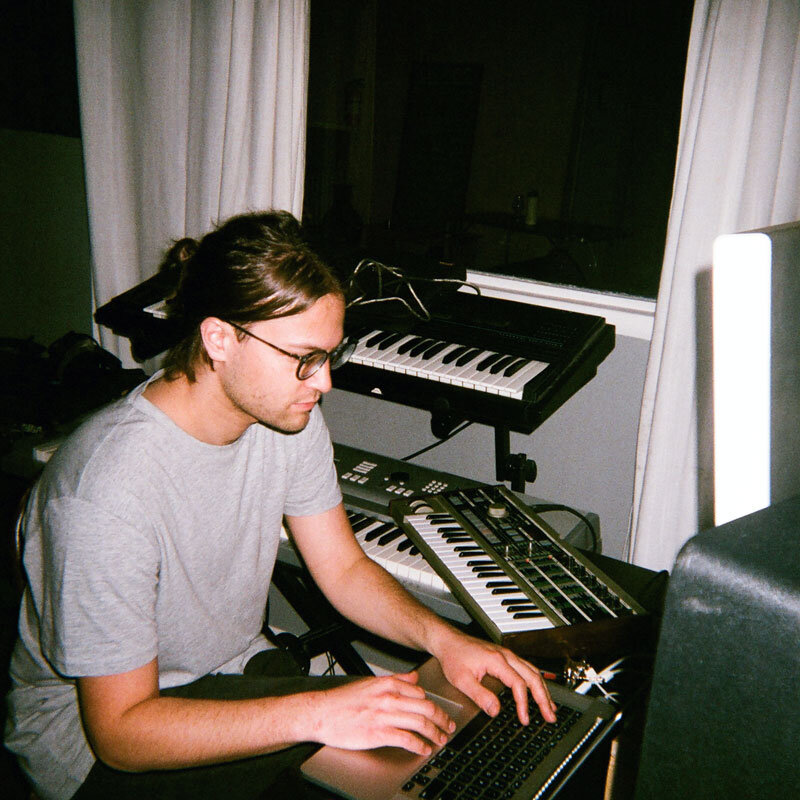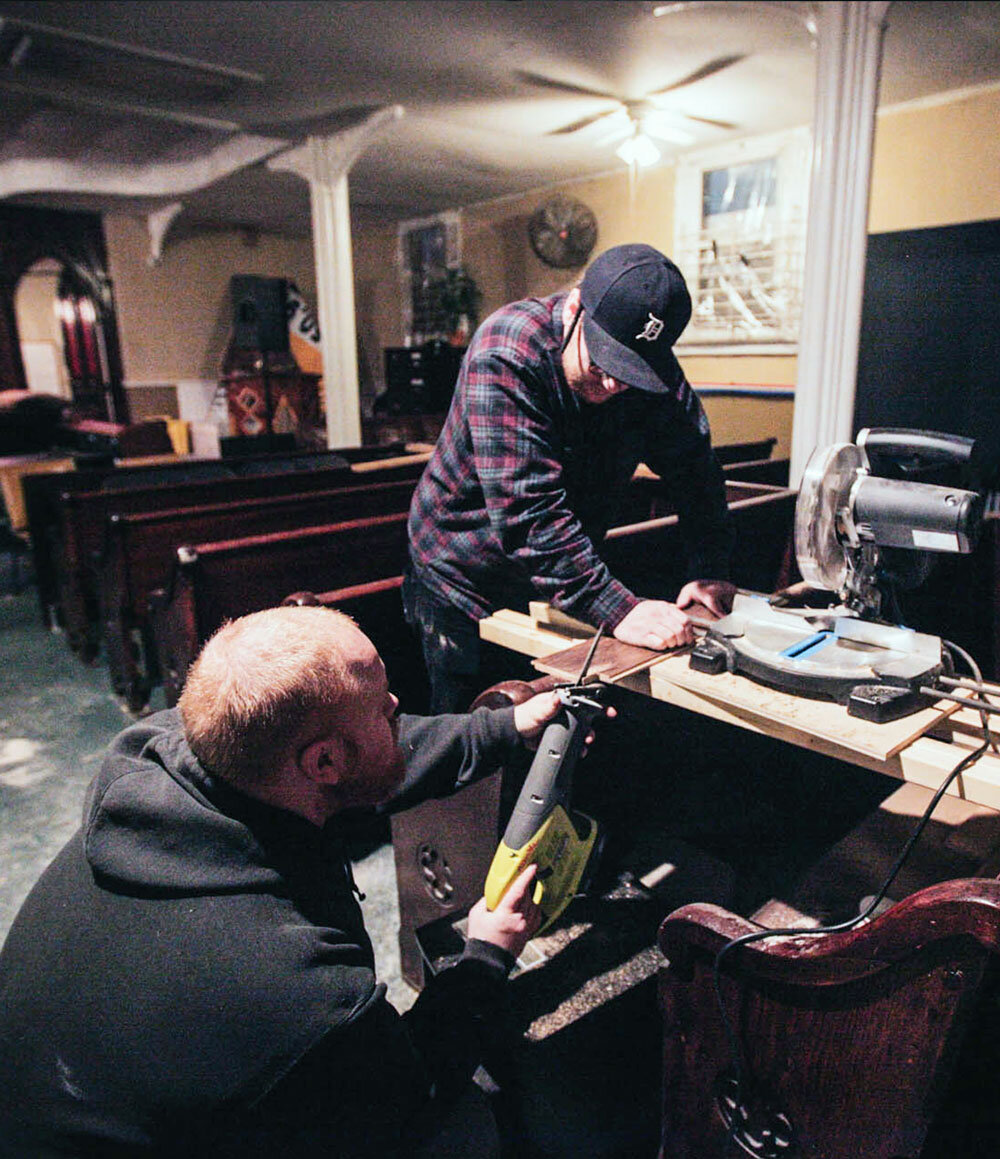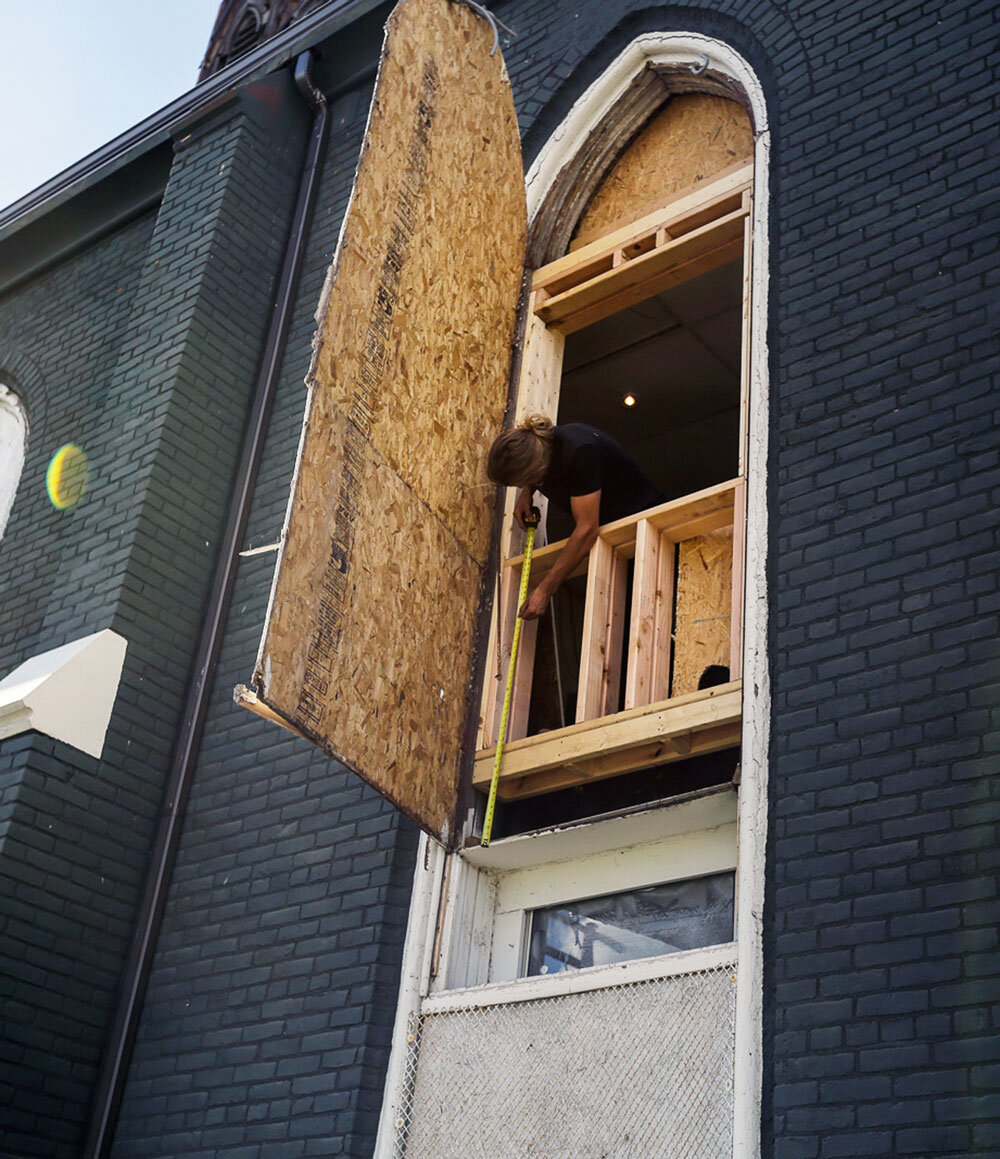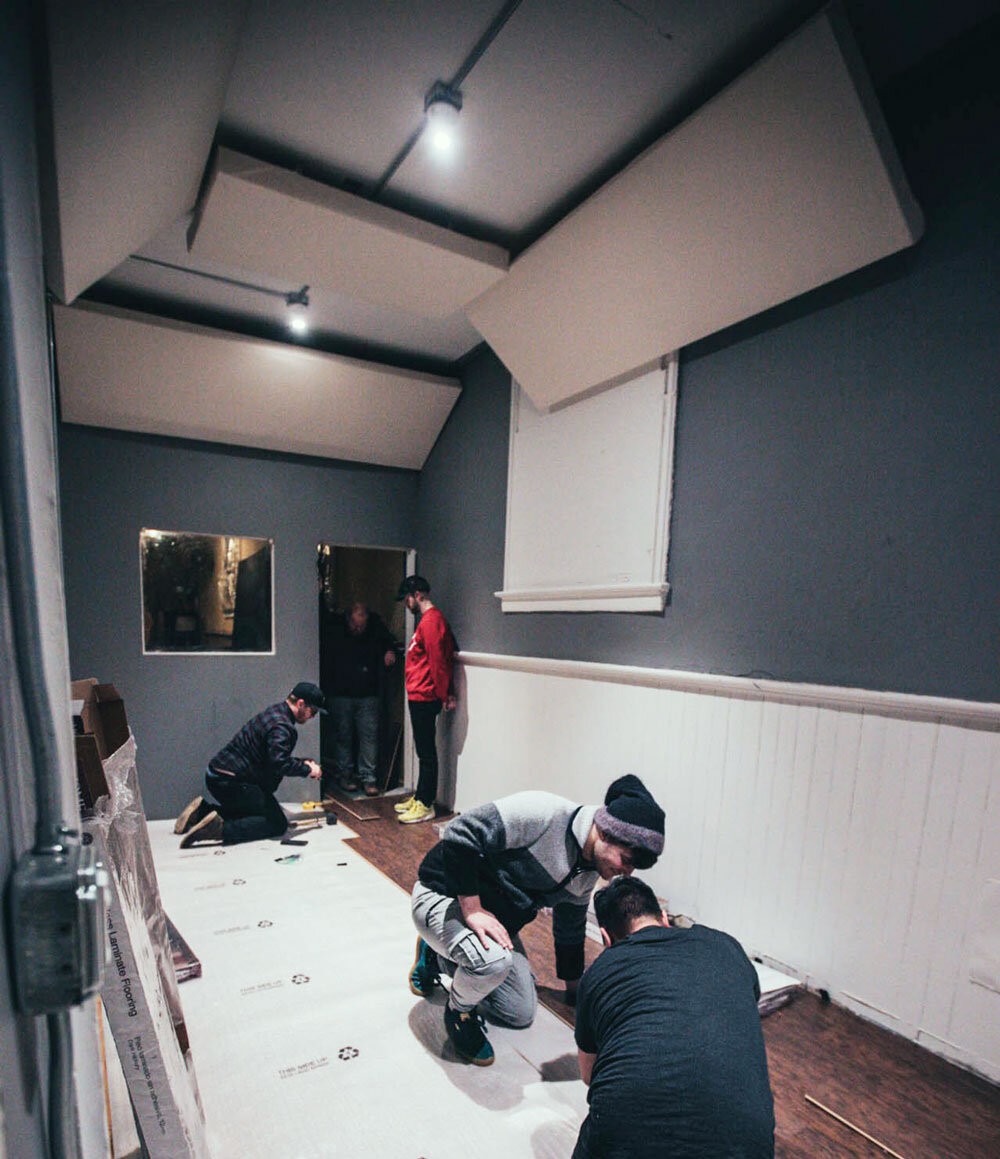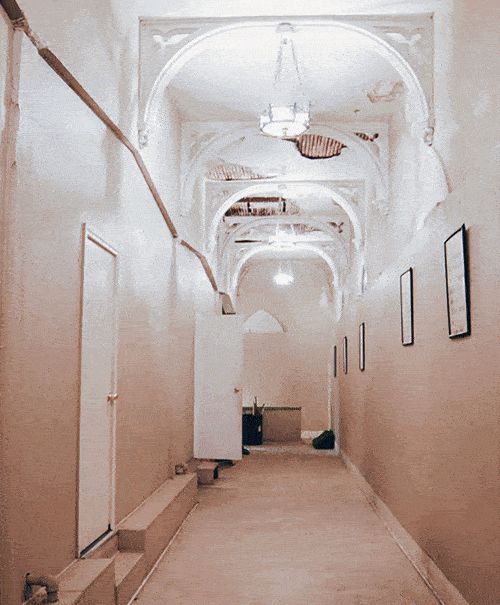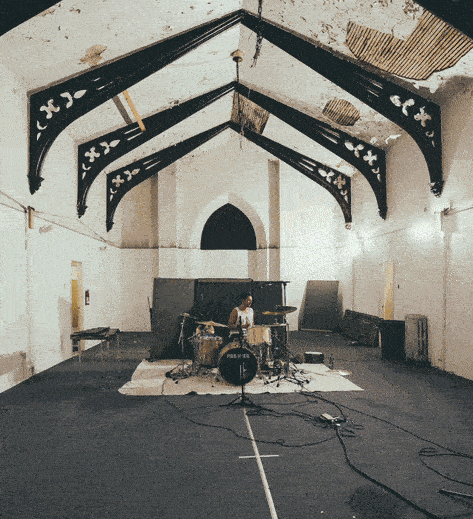History of Assemble Sound
History
Assemble Sound was founded in 2015 with a pretty simple guiding hypothesis: we could foster sustainable artist development by creating a physical studio space that facilitated collaboration.
Whereas formal “artist development” has historically been the business of the major music industry, we thought we could replicate that development infrastructure by simply connecting musicians and the various resources and knowledge those musicians represent. We turned this hypothesis into a reality in March 2015 with the purchase of a historic 1872 church in Detroit, MI, which had sat empty for nearly six years in front of the iconic Michigan Central Station in the city’s Corktown neighborhood.
Church Campus History
The church was originally constructed in 1872 as “St. Paul’s German Evangelical” with a campus that contained The main Sanctuary and the adjacent School and Rectory buildings.
In the 1950’s the church was sold to the House of Israel, who operated on the campus until selling the Sanctuary as a standalone building to La Iglesia de Jesus Christo in the early 1980s.
The 2nd Floor
With no access to the school or rectory buildings, La Iglesia de Jesus Christo decided to construct a load-bearing second story across the sanctuary’s 360 degree balcony, creating a downstairs ceiling and upstairs walls that hid the original vaulted ceiling, decorative woodwork, and the 1909 Estey Pipe Organ.
They convened there until they sold it to Grace-to-Grace Lutheran Church in 1999, who operated out of the Sanctuary regularly until 2009.
History Timeline
Assemble Sound is Formed
In March of 2015, after months of discussion, Grace-to-Grace recognized our vision for the historic sanctuary
and blessed us with the opportunity to purchase it. We immediately moved into the building, and despite its lack of plumbing, heat, a dilapidated roof, and the 5,000 pounds of bird shit in the steeple, we fell in love.
We also got to work.
We invited in artists and started installing plumbing, removing drop ceilings, and building makeshift studios wherever they would fit: Writing rooms in bell towers, closets, and behind the altar, a Studio A in the pastor’s office, a live room upstairs under the vaulted ceiling, etc.
Building a Music Catalog
As we built out the space, we put desks next to the pews downstairs and started working on a catalog of music that didn’t just comprise of songs made in the church studio, but included music from independent artists all over Detroit, old and new.
It was this catalog and our sync clients that kept the lights on in those early days (and still does!), not just for us, but for a growing roster of artists making music in bedrooms, basements, and warehouses all over the city.
Programming growth
As our sync and music supervision business grew, so did our programming and scope. Our free studio residency grew from a few select artists to dozens and our studios functioned 24/7; we launched a free public music industry panel series called “Assemble U”; we hosted song reviews and release parties; and eventually we started managing a few artists who were growing out of the space.
We watched artists go from playing local shows to touring the world. We watched songs made in church closets rack up millions of streams and get used in content by global brands.
Despite the occasional frozen pipes, leaky ceiling, and constant noise bleed between walls, we were watching an insane back-of-a-napkin idea become more and more of a reality everyday.
Consistency
There’s a lot of moving and evolving parts, but Assemble Sound has always pursued our day one vision: a music company doing work for global clients and developing worldclass artists with a community-oriented approach, all housed on a physical campus that includes studios, a performance space, offices, and a place for artists and clients to stay overnight.
Growing into an Assemble Sound Campus
In the summer of 2018 we got one big step closer to realizing that vision: We purchased the adjacent School and Rectory buildings from the House of Israel in 2018, reuniting all three historic buildings as the contiguous campus they once were.
Over the last 150 years, a diversity of people and beliefs have convened here.
We enter this historical narrative, and do so recognizing that we too convene people around a shared belief– the belief that collaboration and cooperation can be a foundation of success for artists and the local ecosystem they represent. We don’t necessarily know if this belief is true, but we’re going to pretend it is, enact it, and see what happens. Much like the buildings we occupy, Assemble Sound the company is a constant work in progress. We appreciate your interest and support with our journey.








